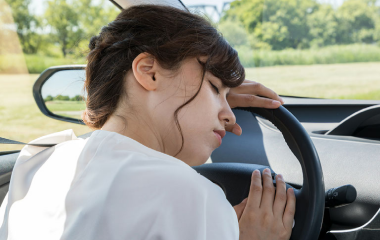Drowsy driving accidents can occur at any age. But data show that the risk of drowsy driving is highest among drivers who are between 16 and 24 years old. The risk of a drowsy driving crash also is 60 percent higher among males than females.
Lorri Henseler knows all about the risks of drowsy driving. Early one morning her 16-year-old son Ronnie was picked up by two friends. During their trip, the young driver fell asleep at the wheel. The car swerved into traffic, and an oncoming vehicle struck the car at full speed. Ronnie was killed on impact.
“It’s a heartache that will never go away,” Lorri wrote on her No Drowsy Driving website.
The family and friends of Bailey Corless share Lorri’s grief. On March 21, 2009, Bailey was in a car with two friends when another vehicle crossed the center line of the road. The two cars crashed in a violent, head-on collision. The 18-year-old, male driver of the other car had fallen asleep at the wheel. Bailey and her two friends were killed instantly.
“That was the worst day of our lives,” her family shared as part of the Utah Department of Health’s Violence & Injury Prevention Program. “We can’t describe the feeling of emptiness in our hearts and in our lives.”
Why do teens have such a high risk of drowsy driving? One reason is that they’re not getting enough sleep on school nights.
The American Academy of Sleep Medicine recommends that teens get a little more than nine hours of nightly sleep for optimal alertness. But CDC data show that 68 percent of teens report sleeping less than eight hours on an average school night.
Early school start times are partly to blame. It is important that parents and local school boards work together to implement smarter school start times. This will allow teens to get the healthy sleep they need to meet their full potential.
Promoting safe driving is critical for overall public safety. But it is especially important for the health of teens. The CDC reports that motor vehicle accidents are the leading cause of death to teens. A primary risk factor is driving without a seatbelt. Other risks include drowsy, aggressive, distracted and impaired driving.
The CDC reminds you that parents are the key to safe teen drivers. Make sure your teen knows that drowsy driving is one of the danger zones for teen drivers.
Do your part to help teens stay safe on the road by staying “Awake at the Wheel.”
Updated Oct. 20, 2015





